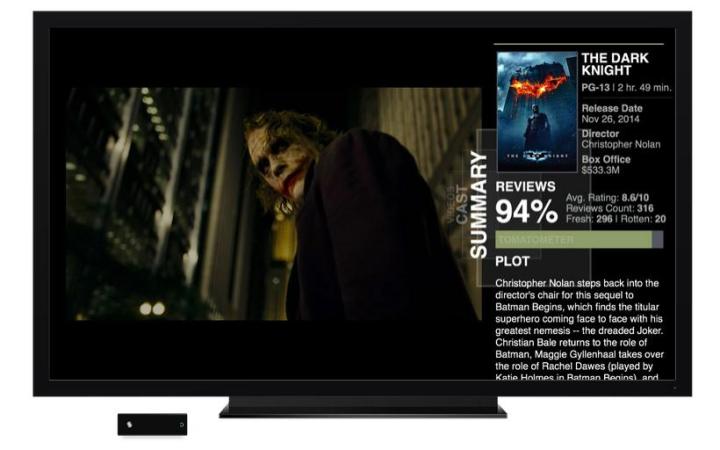
The InAir raised over $177,000 in its Kickstarter campaign, and is now ready to launch to consumers. The company calls it the “world’s first augmented TV experience…turning TV screens into futuristic spaces where viewers can swipe related program content across the screen with hand gestures.”
The device is a small set top box that connects directly to a TV and cable or satellite box via HDMI, and is designed to meld together how users typically watch a movie or show with search and social media.
Using the Internet, the InAiR TV identifies what’s playing and aggregates relevant information and social media related to it. It then layers that content on top of the movie or show, allowing users to control what appears and when. For example, watching a playoff game from any of the major pro leagues could bring up real-time stats, tweets about the action, and information about a specific player or team. The idea is that viewers using InAiR TV can stay on top of all aspects of what they’re watching and participate without having to play around with a laptop or mobile device.
The layering effect is more pronounced when using 3D glasses, but SeeSpace says that’s not a requirement to using it. The secondary content will appear non-disruptively in front of the screen when wearing the glasses. Without them, the content is still non-disruptive, but is a 2D overlay on the screen.
The content is dynamic, so users can use a free iOS or Android app as a remote via a smartphone, tablet or smartwatch. The devices can navigate the content through scrolling and app integration, with a few examples noted in the video below.
Gesture controls aren’t embedded in the unit itself, requiring input from a separate product, which could be an Xbox Kinect, Leap Motion or through the free iOS or Android app acting as a trackpad.
Another limitation that may vex cord-cutters is that it won’t work with free over-the-air (OTA) digital antennas, but appears to be compatible with various other devices, including game consoles, Apple TV, Roku, Chromecast and Amazon Fire TV.
If any of this conjures up images of Minority Report, it’s not a coincidence. One of SeeSpace’s co-founders, Dale Herigstad, was involved in developing some of the visual concepts seen in the film.
The device is initially being made available directly from SeeSpace for $150, with Amazon Marketplace to follow shortly “within the next two weeks.”
Though the U.S. market is the company’s focus, SeeSpace says it will also ship to Canada and Mexico through Amazon.




